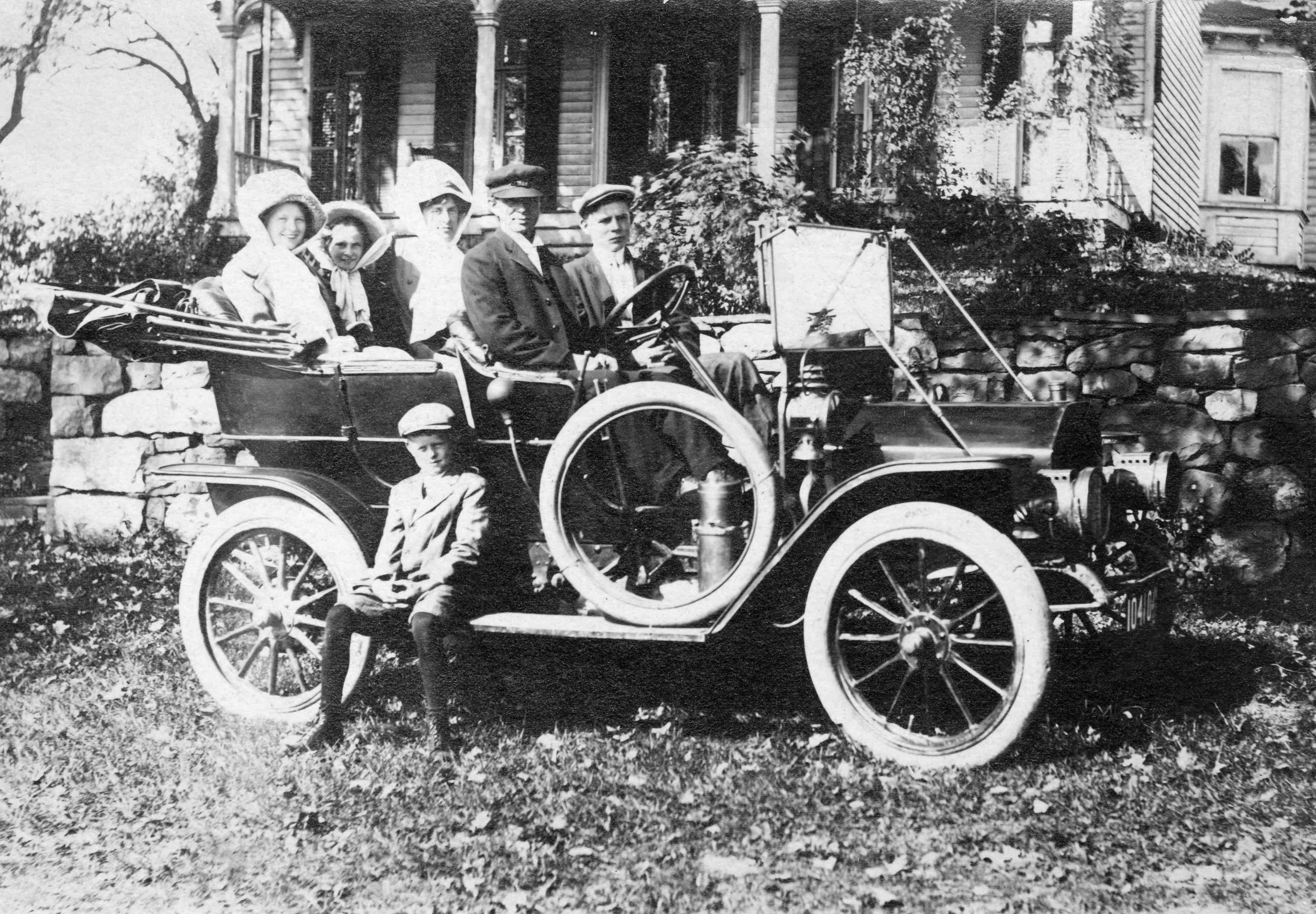metalmagpie
Titanium
- Joined
- May 22, 2006
- Location
- Seattle
My wife is working on a book about her father's family. In it is this picture:

She carefully lists the names of all the people but of course I wanted to know about the car! As I said, the photo is from 1913 so the car could be a 1913 or 1912 or so. The shape of the fenders is distinctive and differentiates it from other cars of that era. I believe the ball handled lever outside the (RH) driver's door was the parking brake.
Anyway, I'm out of my league here. Can you ID this car or suggest a different forum I can post my question in?
metalmagpie

She carefully lists the names of all the people but of course I wanted to know about the car! As I said, the photo is from 1913 so the car could be a 1913 or 1912 or so. The shape of the fenders is distinctive and differentiates it from other cars of that era. I believe the ball handled lever outside the (RH) driver's door was the parking brake.
Anyway, I'm out of my league here. Can you ID this car or suggest a different forum I can post my question in?
metalmagpie




